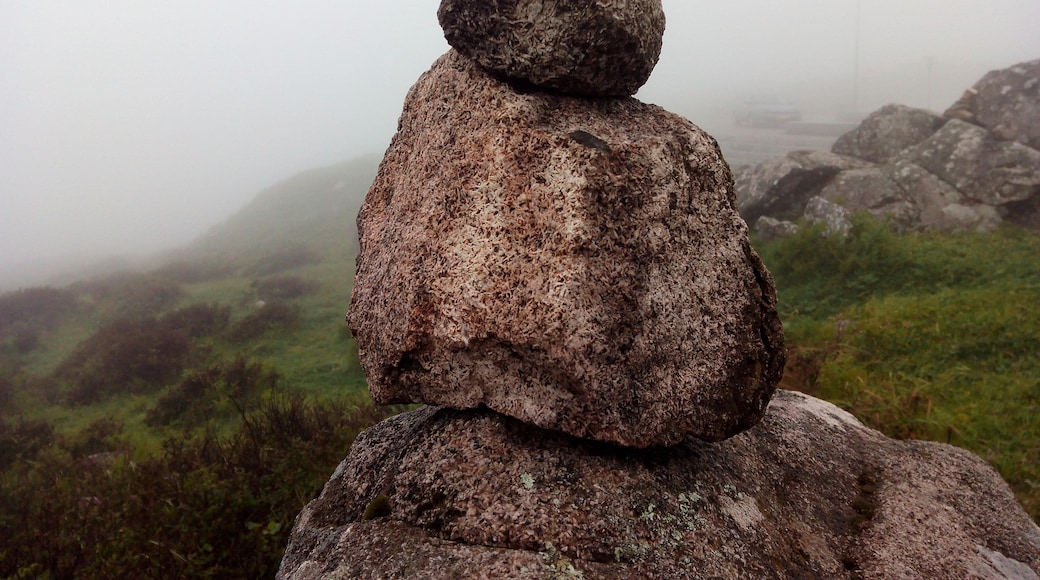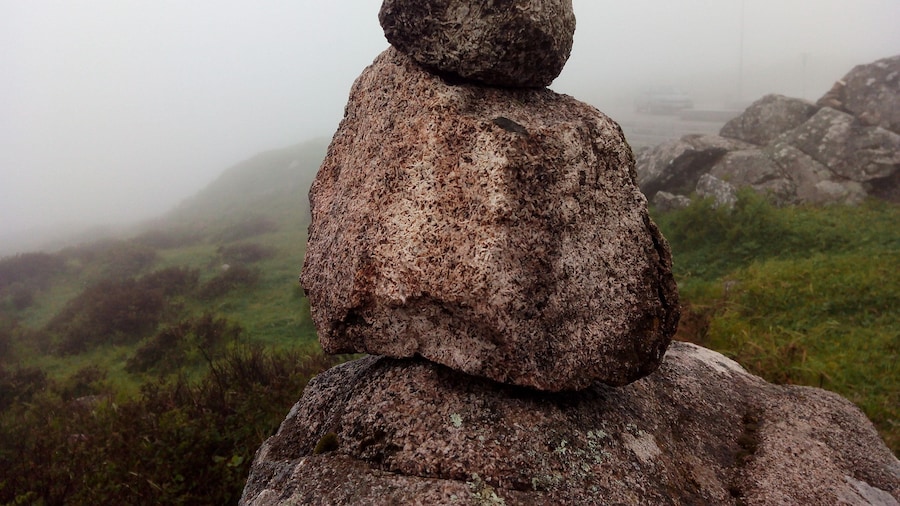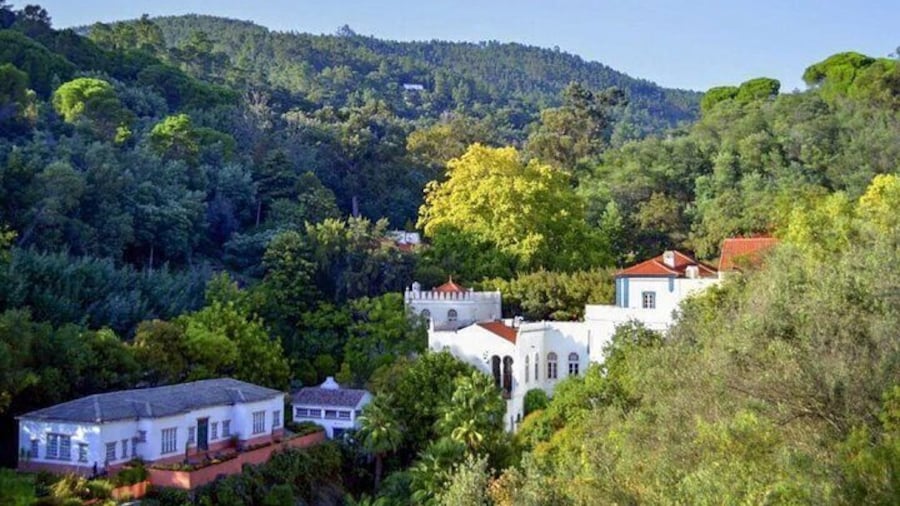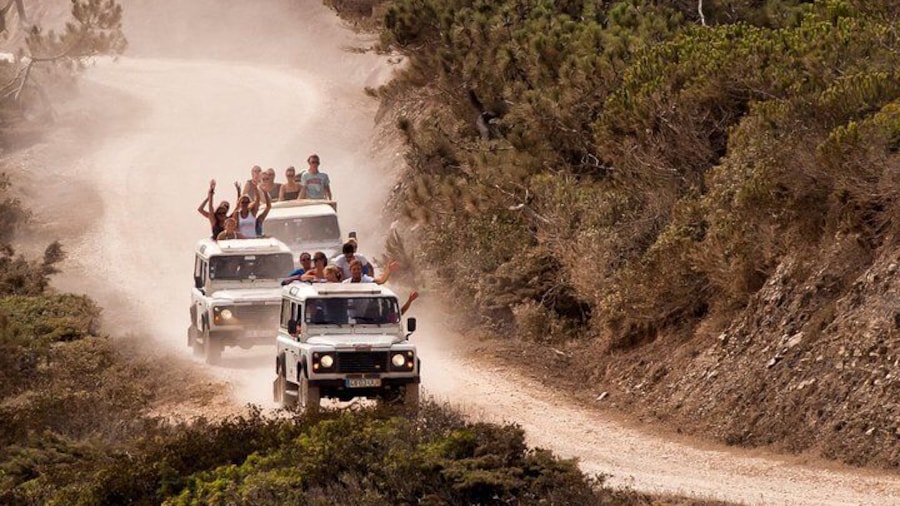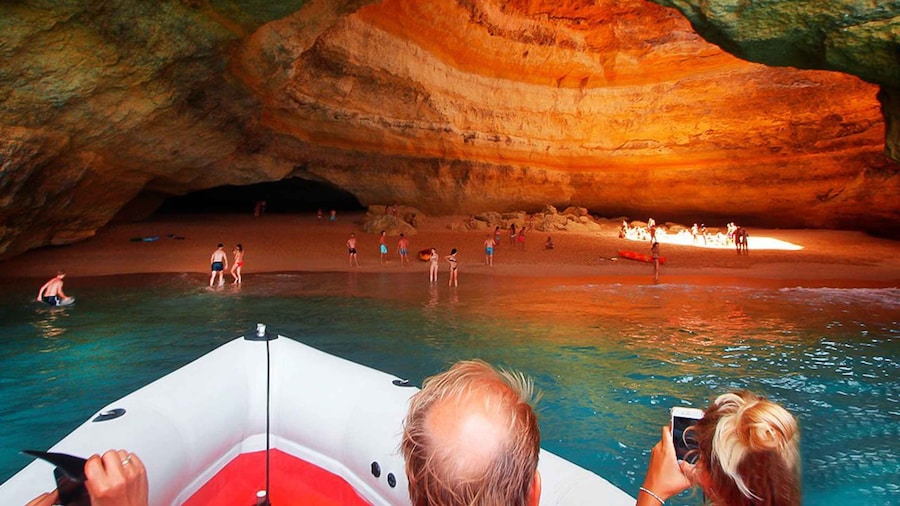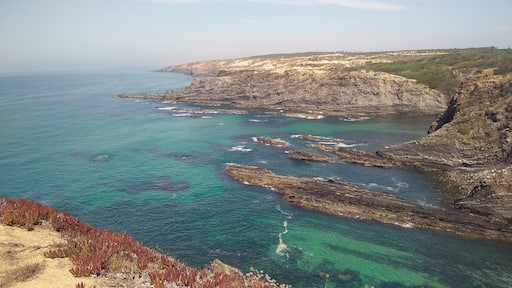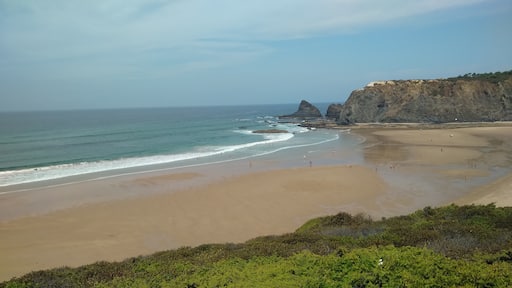Monchique is a beautiful village set up high in the Serra de Monchique, in between two mountains
Monchique is a picturesque village with traditional whitewashed Algarvean houses, sporting blue and yellow frames that stand out in stark yet beautiful contrast to the surrounding green hills.
Visitors like to visit Monchique to relax in the natural spring waters of its thermal treatment centre, to hike and soak in the stunning mountain scenery and eat good food. It’s just a 30-minute drive from Portimão city and the popular beach, Praia da Rocha.
Convento de Nossa Senhora do Desterro
The convent of Nossa Senhora do Desterro was founded in 1631 by Pero da Silva, who would later become governor of Portuguese India (Goa). According to legend, Pero da Silva brought a small statue of Our Lady in ivory from India, which was later moved to the local Chapel of St. Sebastian. Nowadays you can still wander through the ruins and admire stunning views of Monchique from this spot.
Caldas de Monchique
The therapeutic properties of the local waters were first recognised during the Roman Empire when the waters were deemed sacred. Although the reputation is less based around superstitions today, the water’s mineral content still maintains Monchique position a top spa destination. In fact, it’s reputed to help with a whole range of problems, from issues with the respiratory system and the digestive tract, to muscular and rheumatic troubles.
There are numerous spa hotels in the area offering a whole range of treatments, including the hydro Vichy shower, indoor and outdoor pools, massages, saunas and Turkish baths.
Serra da Fóia
Fóia is the highest point in the Algarve. Standing 902 metres above sea level, from here you can admire the incredible views over the coast of the Algarve. Better charge your camera.
Art Gallery Bongard
This old townhouse is now the village’s top art gallery, displaying beautiful ceramic stoneware sculptures, along with paintings and drawings. The top floor exhibits the layout of a traditional regional home, including kitchen, study and bedroom.
Food
Despite its size, Monchique still has a great selection of cafes and restaurants serving incredible fresh fish and seafood, and other traditional Portuguese fare. Make sure you don’t miss the Medronho, a local liqueur made from the fruits of the arbutus (strawberry) tree. Also worthy of mention is the local honey, used in many local cakes and desserts. The main sweet is the Tacho cake. The region is also famous for its excellent pork sausages and ham.
